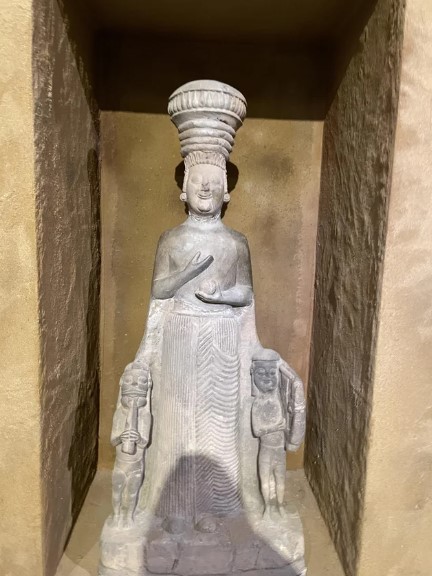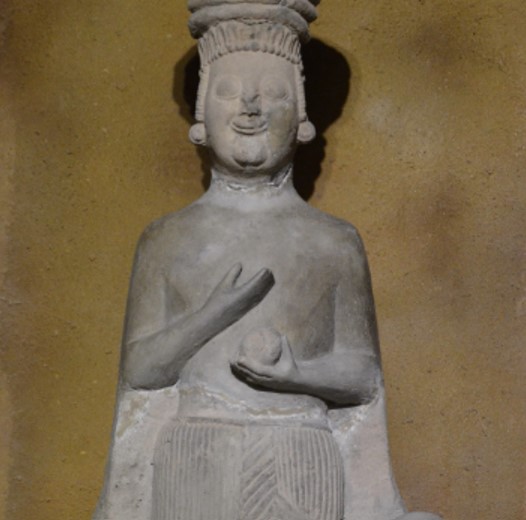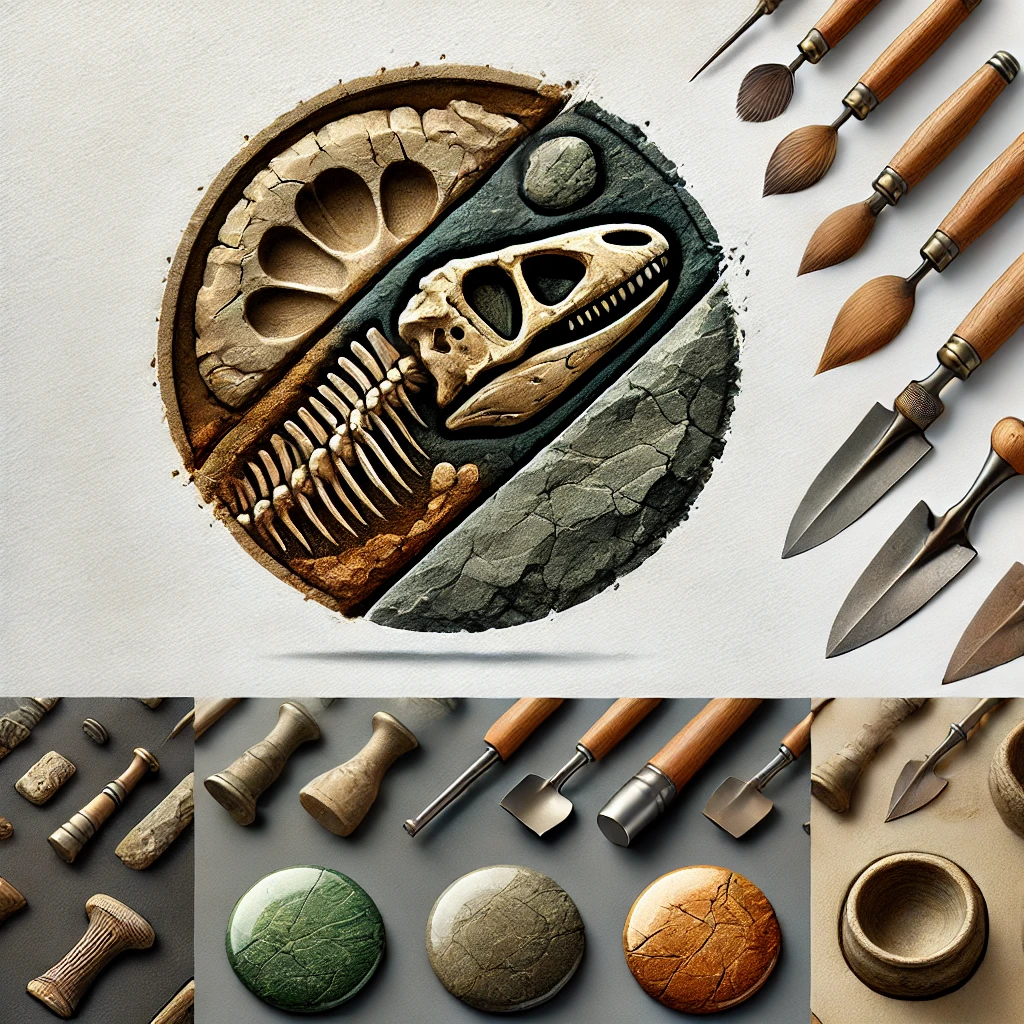The Phrygian statue of the goddess Cybele or Agdistis, dating to around 550 BC, is an important artifact from ancient Phrygia updated by archeology.dulichvn.net as one of these remarkable sculptures that represents not only the art of the time but also the deep spiritual beliefs of ancient civilizations.
1. The Origin and Meaning of Phrygian Statue
Agdistis is more than a deity; she is the personification of a sacred mountain in Phrygia. Together with Kybele (also known as Kubaba) and Ida Mate, she embodies the concept of the Mother Goddess—a symbolic representation of Earth. These goddesses, deeply revered in ancient mythology, connect humanity to sacred mountains and caves, which were viewed as womb-like spaces of creation and renewal.

1.1. Symbolism of Sacred Mountains
In Phrygian belief, mountains held divine importance. They were considered the dwelling places of gods and the sources of life, much like the mother goddess herself.
See more: Clay Goddess Statuette A Glimpse into Ancient History
1.2. Connection to Kybele
Kybele, often depicted alongside lions or seated on a throne, is another aspect of the Earth Mother. The merging identities of Kybele and Agdistis reflect the syncretic nature of ancient religions.

1.3. Importance in Phrygian Culture
These goddesses symbolized fertility, protection, and the enduring power of nature. Worship often included rituals conducted in mountain sanctuaries or hidden caves, creating a tangible link between deity and geography.
2. Historical Significance of the Statue
This statue, housed in the Museum of Anatolian Civilizations in Ankara, Turkey, provides invaluable insights into ancient Phrygian art and culture.

2.1. Artistic Characteristics
The statue reflects the unique artistry of the time, combining symbolism with detailed craftsmanship. It serves as a testament to the skill and spiritual dedication of Phrygian sculptors.
2.2. Connection to Religious Practices
The depiction of Agdistis likely played a role in rituals and worship, acting as a medium between the divine and the earthly realms.
See more: Exploring Bannermans Castle 1940: Unique historical heritage of the United States
2.3. Preservation and Legacy
By preserving such artifacts, museums like the Museum of Anatolian Civilizations ensure the endurance of ancient cultural narratives for future generations.
3. Phrygian Statue in Modern Context
The worship of Agdistis and Kybele might be ancient, but their influence resonates in modern interpretations of mythology and art.

3.1. Rediscovery of the Mother Goddess
Contemporary scholars and artists draw upon these ancient figures to explore themes of nature, femininity, and creation in today’s world.
3.2. Symbol of Earth and Sustainability
As a symbol of Earth, Agdistis and her sacred mountains remind us of the need to protect and cherish our natural environment.
3.3. Cultural Heritage
Artifacts like this statue underscore the importance of cultural preservation, connecting us to the rich tapestry of human history.
Conclusion
The Phrygian statue of Cybele or Agdistis is a breathtaking testament to the rich spiritual and cultural traditions of ancient Phrygia. Far more than a simple work of art, this statue encapsulates the reverence that early civilizations held for the Earth, the sacred mountains, and the divine feminine. As a symbol of the Mother Goddess, it embodies the essence of fertility, creation, and protection—values that defined the Phrygian worldview and influenced neighboring cultures for centuries.
Today, the statue is proudly displayed at the Museum of Anatolian Civilizations in Turkey, inviting visitors to delve into a profound chapter of human history. The intricate details of the sculpture reflect both the artistic sophistication and the spiritual depth of its creators. It serves as a bridge between past and present, offering a tangible connection to the beliefs and rituals that shaped an ancient society.

CÁC TIN KHÁC
Mary Walton: The Forgotten Inventor Who Helped Clean Up America’s Cities
Tomb of Queen Nefertari in the Valley of the Queens, Egypt
Discover the Hypostyle Hall of the Temple of Hathor at Dendera
Venus de Losange: Unveiling the Mystery of a 20,000-Year-Old Paleolithic Icon